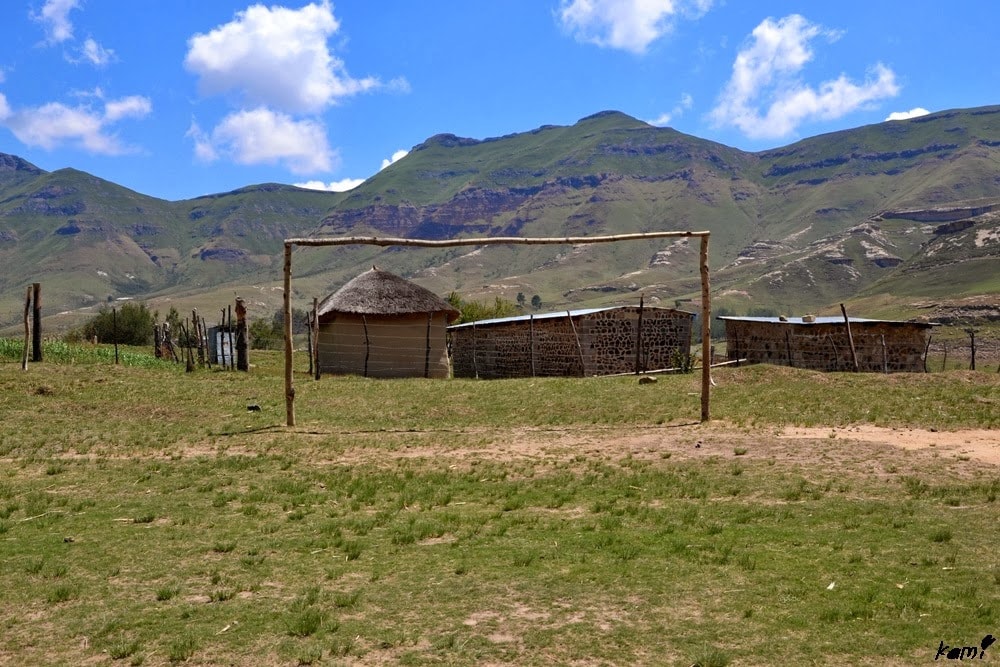
We left the hostel early in the morning. The small buss was packed with people, the day was getting hotter and hotter, we were glued to each other. The way to the border with Lesotho took around 2 hours and in its last leg the road was pretty stony. It was shaking like crazy but eventually we made it up to the Monantsa Pass – the actual border that is located at the altitude of 2245 meters. That’s the only crossing point between South Africa and Lesotho where you can enter the later one without a visa. It’s an extremely remote area and there used to be a border point on the Lesotho side but it closed down since there were hardly any people using this way. The only passport control is only on the South African side and they do everything manually there, putting stamps with wrong date into the passports etc (according to mine I left South Africa in 2012 and came back exactly one year later).
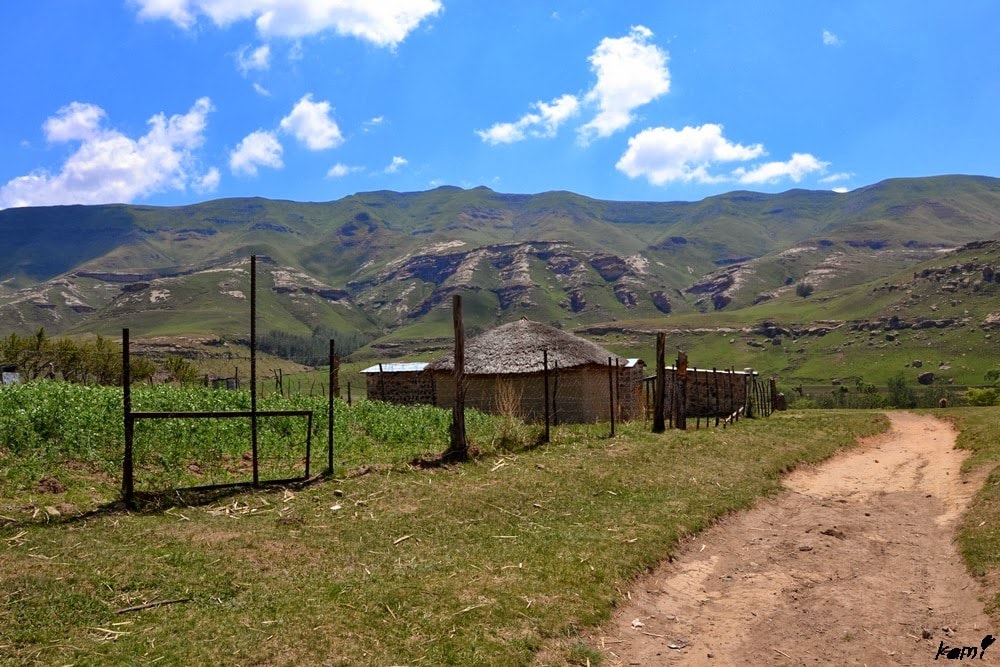
Once we crossed the bordered and entered Lesotho – the country number 47 for me – we rolled down on the worst road ever to the small village hidden in the valley between the monumental mountains. It was such a breathtaking place but also obviously a very poor one. Due to the location, beautiful yet forgotten by the most, this place looked like the time has stopped there. All of the houses were round shaped and covered in thatch – that’s because the local people believe souls of their ancestors still live in the house. No one kills the insect inside for the same reason – maybe the ancestor became a fly after the death? In the area there’s a big number of fatalities due to the thunder striking – people explain this as witch’s job… During the tour we also visited a local healer – a guy probably younger than me who found out about his gift in his childhood years.

The very first place we visited was the local school – and that’s already when this tour started bothering me (and as it turned out later on, most people shared this feeling). We were a mixed group – big part of it, including me, were backpackers that stayed in the same hostel (that organized the tour) but there was also a very disturbing group of Germans (well, they could as well be from any other country, it’s not about the nationality but about their behavior) – two middle-aged pairs and a young girl, maybe 10 years old. So, we arrived to school that was partly sponsored by the hostel. The kids were looking curiously at us and were hiding in the corners. We were looking around uncomfortably, wondering how to behave in this weird situation. And what did this German group do? They brought a pack of apples (apparently they considered bananas but then decided they’re gonna visit kids, not monkeys), the young German girl was standing on the chair, all the local kids were packed around her, jumping to get the apple and she was just throwing the fruits randomly at them (not giving, throwing!). She looked slightly uncomfortable but happy parents were playing paparazzi, trying to document the scene… Most people from the group left the school building at that time, some didn’t even enter seeing what’s happening inside…

Later on, when the group listened to the story of the village, the community, the school and how the hostel is helping them all the adult Germans, in turns, were hugging little kids and taking pictures of the scene. They didn’t care what the guide had to say, they only wanted to make themselves feel better by the illusion of helping “poor little kids from Africa”. Every single person in the group was disgusted at this behavior yet we did nothing besides giving them the disappointing look. What adults did was reprehensible but everyone looked with bright smiles at what the girl did. Without anyone looking at her she shyly looked at kids playing and eventually joined them, jumping the rope together. It was such a heart melting picture. There were no judgments, no discrimination, no borders – just the pure kids’ joy! And that’s how it should be!

After hiking up to the mountains to see the old bushmen paintings (that are barely seen as they were destroyed by local kids and tourists who took parts of it as souvenirs) the tour stopped in one of the houses to try the traditional local beer. In that remote area there are no shops like we know them. People offer other things to exchange and communicate with colorful flags – if there’s a white flag hanging next to the house it means these people have beer, yellow – pineapple bear, read – meat and green – vegetables. That seems like a smart system but when we were there we spotted only one white flag – and that’s actually where we headed.
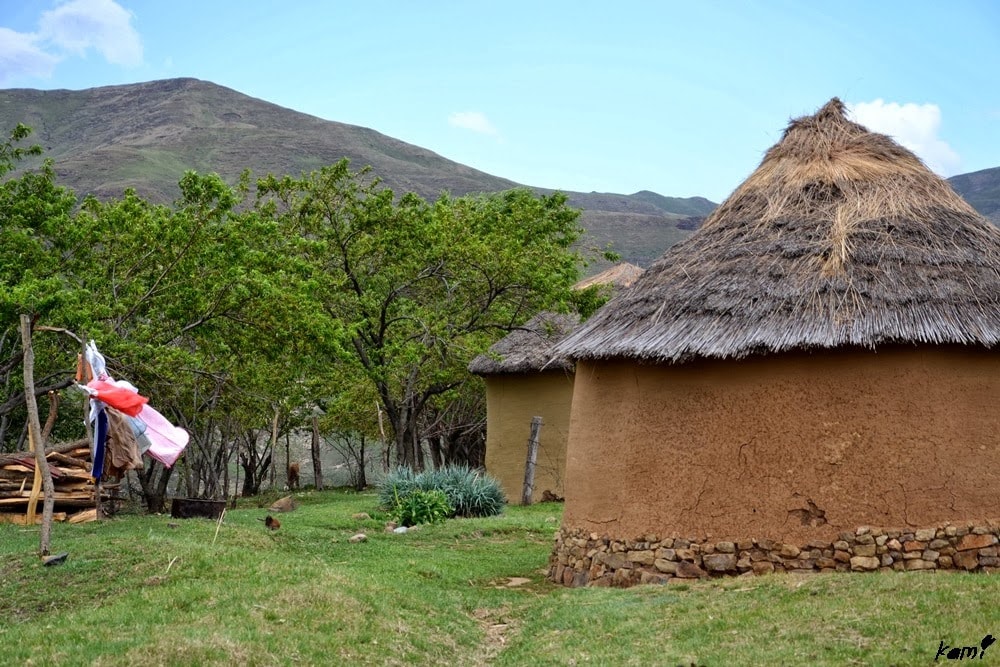
At the door we were greeted by the small, beautiful girl – she was barely over 1 year old and just the prettiest! Germans saw their chance to feel better again and already took care of her. We entered the small round hut, the local older people wearing traditional clothes gathered there already, waiting for us. And so we were put in another awkward situation…We sat on the ground on one side of the hut, locals on the other. We looked uncomfortably at each other, it felt like we’re in the circus and the show was about to start. Germans were already hugging the little girl, holding her (in turns) on their knees, feeding with jelly bears (and she started to choke)… After a longer while of uncertain looks flying across the hut we were offered the local beer to try. It was in a big capsule, looked like a porridge and tasted awful, with a sour flavor. I tried only a sip and just pretended to drink more. After few rounds among us the beer was over so after moving awkwardly around we could leave the hut. Another weird experience of the day was over…
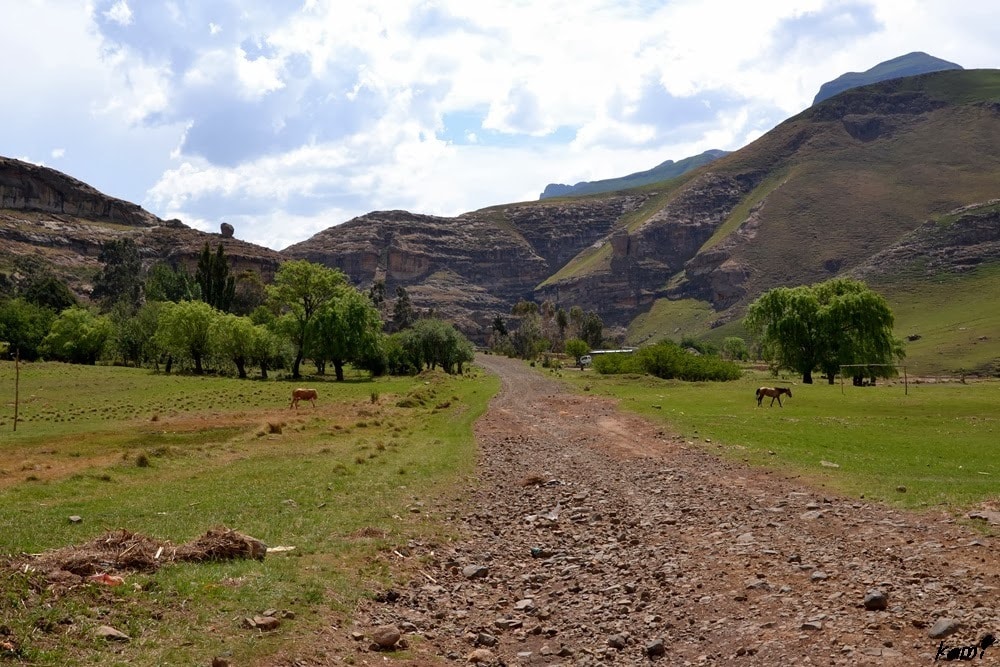
Eventually we visited a healer in his “office” – yet another round hut but full of herbs or superstition things (I really don’t want to know what/how they were used for). He was a young, shy guy, sitting proudly in his fancy clothes and telling us his story (in his language, our guide was a translator). It was actually pretty interesting and I enjoyed listening to this a lot as I’ve never encounter anyone of that kind. But for all the time I couldn’t help feeling like I’m in some kind of show, theater play and even if that’s how these people live they still put some kind of mask when the tourists visit their village.
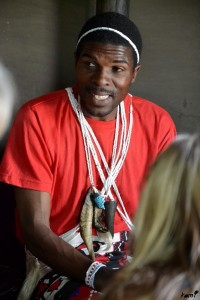
The last stop in Lesotho was in the teacher’s house where we could try a little bit of the local food (some kind of fat rice porridge with spinach) and beer. And this place was like a completely different world from what we’ve seen before. The building was spacious, newly built, some rooms still under the construction. The kitchen was full of the equipment that you wouldn’t expect to find in this remote countryside. It was kind of the eye opening. There was no way a teacher in a small, poor village can afford a place like this. But when you think there’re tours every day visiting the area it kind of changes the perspective. I might be overestimating but that’s how it looked for me and couple of more people.

It was already getting late and we had to hurry to be on time at the border (it’s open every day from 8am till 4pm). The road was very steep and the full bus didn’t make it up to the top, we had to leave it and walk a little bit. The way back to the hostel passed by in the silence – everyone was just lost in the thoughts about the day and experiences we’ve just had. Later on, during and after dinner, we all sat together an exchanged our opinions. And all were more or less the same…
No matter what, I’m glad I went for that tour. The views were breathtaking, the mountains were spectacular and not a long time ago I didn’t even know there’s a country named Lesotho yet I could visit it. The highlight of the day was definitely the hike up to the bushmen paintings where I was overwhelmed with the feeling of space and the beauty of the place. But everything else was just a big no and I felt really uncomfortable for most of the time. I’m all for meeting local people and learning about their life but not in that way. With tours arriving every day these people are dependable on them, play their show to tourist, sell themselves and I think somewhere along they also might lose their real face. It’s like a play that tourist pay for and are expected to enjoy. And some do, like these Germans. They can make themselves feel better that way, they are so proud of themselves that they are helping poor kids, they can take pictures hugging cute African children that they can show to their friends back at home (who will keep telling them how big hearts they have). I feel the most sorry for the small local kids who, from the very beginning, grow up with knowing they have to do nothing, just be around, and the white people will prize them only for that. This may result in a community that can not take care of themselves if, for some reason, the tourists will stop arriving. Instead of teaching the locals how to do things, instead of educating them about newest options they can use the tours have a completely opposite effect. And while tourist are ensured they pay money for a good cause, to help remote areas, the truth sometimes is completely different. If we want to help such remote areas in Africa or anywhere else in the world there are other, better ways to do it…
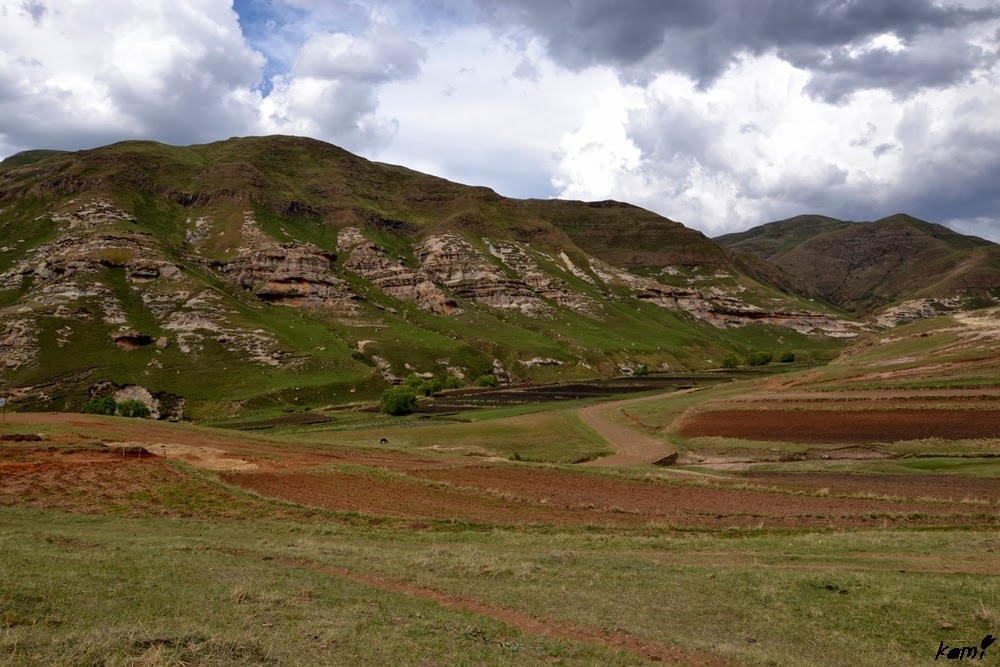
As for me, this tour was enough and I don’t think I will again for a similar tour that is supposed to teach me about the life of the people in remote areas. I don’t want to feel as awkward as I did in Lesotho….I don’t want to sound like a hypocrite as I do go for organized tours every now and then, but I think I had to experience that once to see the thin line between these of the good value (like Hebron for example) and these that just aim at getting as much out of tourists as possible (yes, we were asked many times to donate money for the village).
Sorry to interupt but would you like to be the first one to read my posts? Then sign up to my newsletter! I promise no spam, just new posts landing directly in your mailbox. Simply click on the picture below! Thanks!
There’s a really good book by Jennie Dielemans, telling about the ethical side of tourism and I will just finish this post will telling each and every of you to read it and give it some thoughts.
Do you go for organized tours?
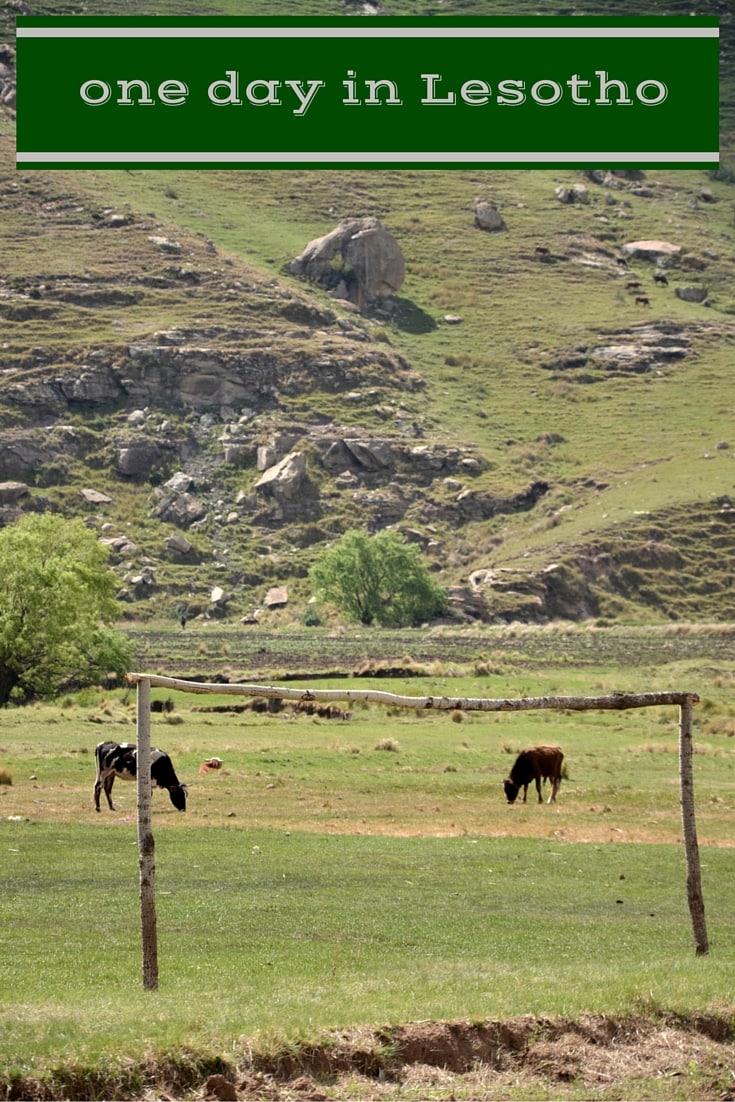
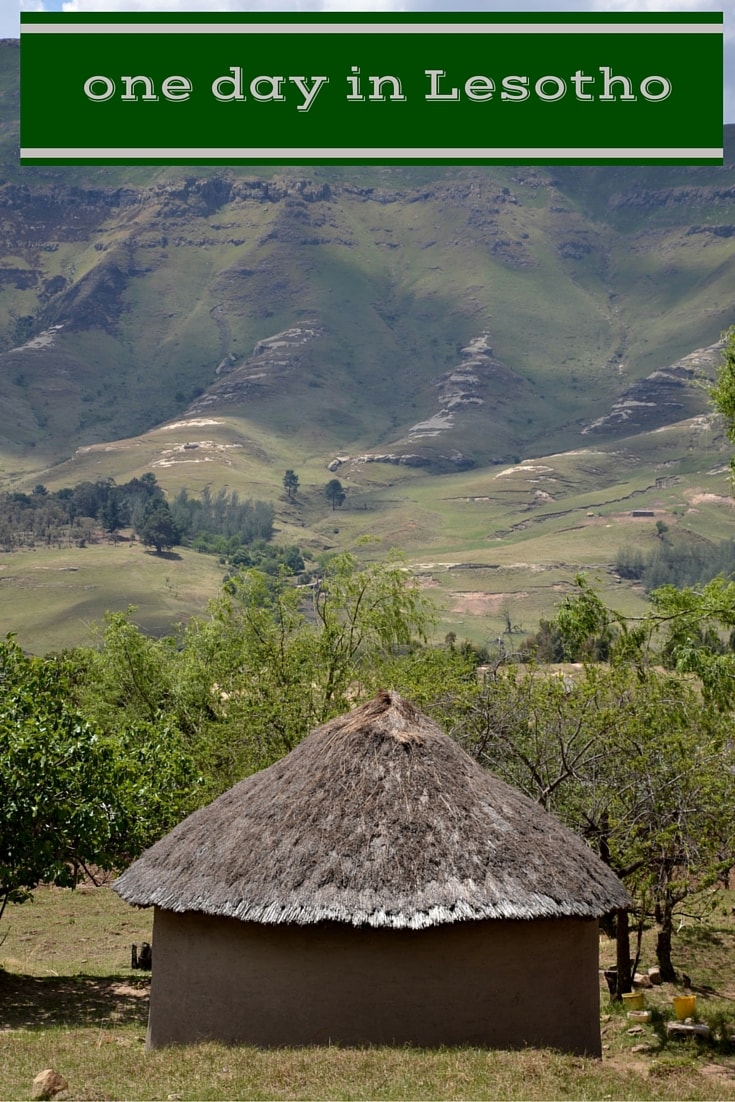
If you think of visiting Lesotho or just want to read more about the country take a look what else I wrote about it!
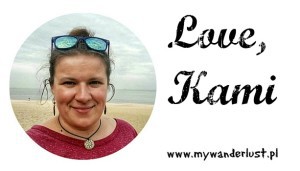
If you enjoyed that post why don't you share it with your friends? That would mean so much to me! Also be sure to join 30.000+ fellow travelers and follow me on Facebook, Twitter, or Instagram for travel updates and even more pictures! If you don't want to miss new posts sign up to my newsletter or follow on Bloglovin!



6 Comments
Jobo Pholoana
02/05/2015 at 08:53Thank you for a story well told. I am glad you brought it up as a white person. We try to discourage our people from accepting abuses, but we fail because they get something out of it. I am a Lesotho citizen who grew up in the village
kami
15/11/2015 at 11:28Thank you for your nice words. I don’t think there’s a way to stop it, unfortunately. White people will always want to see how others, so exotic to them, live and local people can see the benefit for playing the show… and both sides are happy…
Sam Gaborone
20/10/2015 at 12:33a brilliant piece of literary work, honest and hearty.
kami
15/11/2015 at 11:29thank you!
Magda
16/10/2019 at 15:03Cześć. Czytam Cię od paru lat, ale dopiero teraz dokopałam się do tego posta. Pamiętasz może, jak zwie się owa wioska? W 2013 też byłam na takiej samej wycieczce i za cholerę nie mogę sobie przypomnieć nazwy. Głupio tak nie wiedzieć, gdzie się było :)
By the way: po powrocie też miałam mieszane uczucia i czułam lekki niesmak, zwłaszcza że mieliśmy przewodnika buca, który bardzo protekcjonalnie odnosił się do biednego Sangomy.
kami
06/11/2019 at 22:29Cześć Magda! Nazwy wioski nie pamiętam i na mapie gugla też jej nie widzę (chyba że to Libono?), ale była zaraz za przełęczą Monantsa – na przełęczy był punkt graniczny. Szczerze mówiąc nie wiem czy bym się teraz wybrała na tą wycieczkę, wiedząc jak to wyglądało. Ale chyba takie niefajne doświadczenia też są potrzebne raz na jakiś czas.